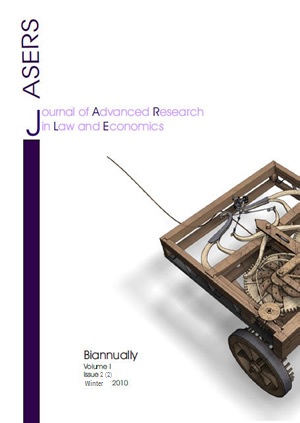LIQUIDITY ASSISTANCE AND THE PROVISION OF STATE AID TO FINANCIAL INSTITUTIONS
LIQUIDITY ASSISTANCE AND THE PROVISION OF STATE AID TO FINANCIAL INSTITUTIONS
Author(s): Marianne OjoSubject(s): Economy
Published by: ASERS Publishing
Keywords: rescue aids; liquidity; banking communication; Systemically Relevant Financial Institutions; guarantees; recapitalization; financial crisis;
Summary/Abstract: In response to the recent Financial Crisis -after it had been widely accepted that “a serious disturbance in the economy of Member States” had occurred, and that several measures were required to remedy this disturbance, various Commission communications were adopted and these include: The Communication on the application of State aid rules to measures taken in relation to financial institutions in the context of the current global financial crisis (hereinafter "the Banking Communication"), its Communication on the recapitalization of financial institutions in the current financial crisis: limitation of aid to the minimum necessary and safeguards against undue distortions of competition (hereinafter "the Recapitalization Communication"), and its Communication on the return to viability and the assessment of restructuring measures in the financial sector in the current crisis under the State aid rules (hereinafter "the Restructuring Communication").” The Banking Communication will constitute the focus of this study. Are rescue aids (as distinguished from other forms of State aids) justified even where the possibility exists that rescue attempts are unlikely to succeed? Should rescue aids still be granted at a point when other measures such as winding down measures and the provision of other forms of liquidity assistance could be introduced? At what point should the Government decide upon the nationalization of ailing institutions? Furthermore, should State aids be provided to all classes of financial institutions which are considered to qualify for such aid – as stated within the Banking Communication? These questions interalia constitute questions which are not only raised in this paper, but which this paper aims to address through a consideration of different State aid rescue and restructuring measures, as well as reference to two rescue aid cases, namely those of Bradford & Bingley (State aid NN 41/2008 – United Kingdom Rescue Aid to Bradford & Bingley) and Hypo Real Estate (State aid NN 44/2008 – Germany Rescue Aid for Hypo Real Estate). In addition, the impact of the recent crisis on the choice of legislation and legal basis for compatibility assessments will be highlighted. Whereas State aid to individual undertakings in difficulties is usually assessed under Article 87 (3)(c) of the EC Treaty and the Community Guidelines on State aid for rescuing and restructuring firms in difficulty, the systemic relevance of a financial institution and the impact of such an institution's failure on the economy, has been reflected by the preference for Article 87(3)(b) EC Treaty and Article 107(3)(b) TFEU.
Journal: Journal of Advanced Research in Law and Economics (JARLE)
- Issue Year: I/2010
- Issue No: 02
- Page Range: 137-157
- Page Count: 21
- Language: English
- Content File-PDF

